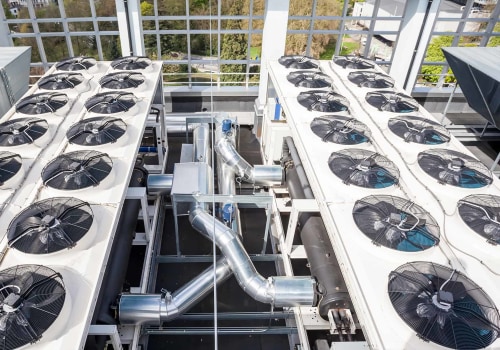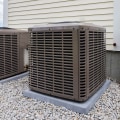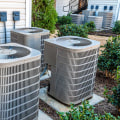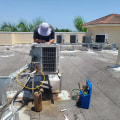The oven and fan motor are two of the main components of a home HVAC system. The oven is usually quite large and requires its own space in the basement, attic, or closet. It is powered by a fuel source, such as natural gas, oil, or electricity, to heat the incoming air. The compressor is the part that does the most work and is often referred to as the “heart” of air conditioning.
However, it is important to remember that many system problems do not originate from the compressor and that a premature compressor failure can indicate an underlying issue. Commercial HVAC systems are similar to residential units in that they dehumidify the air and remove heat. It is important to note that the air conditioner itself does not cool the building, but works with other subsystems to regulate temperature. The condenser is the heat exchanger on the hot side of the air conditioning unit and it removes heat from the building and transfers it to the outside.
The liquid refrigerant is then converted to gaseous refrigerant by passing through an expansion valve. This valve provides precise control of the flow of refrigerant to the evaporator coil. The evaporator coil contains cold refrigerant received from the compressor and as air from the fan moves over it, heat is removed from the air in the treated area. Chillers come in air-cooled and water-cooled varieties and their purpose is to remove heat from liquid circulating through pipes in a structure.
An air-cooled chiller has condenser coils cooled by a fan and is usually located outdoors. Heat exchangers are responsible for transferring heat from one place to another and are used in both heating and cooling. An air conditioner uses a chemical liquid called refrigerant to move heat into cold air that is blown through ducts and vents into a room. In gas furnaces, a heat exchanger heats indoor air with furnace flue gases and distributes it throughout a space; exhaust gases are vented through an outdoor chimney to prevent poisoning. The main unit of an HVAC system includes an air conditioner, heat pump, or oven which are responsible for heating and cooling your home with help from other internal and external mechanics. The heat generator is a key component of an HVAC system when it comes to heating.
This device extracts energy from fuel inside a furnace (also known as a combustion chamber) which heats flue gases that then heat air or other fluid (such as water) which then heats air entering a conditioned environment. Electrical heat can also be used to heat an air conditioner. Most heat generators burn fuel as an energy source so safety considerations must be taken into account since combustion systems operate mainly with excess air to lower combustion temperature and produce fewer NOx emissions. Carbon monoxide is one of these products so detectors must be arranged to control such leaks. A fan passes air through a heat exchanger to an air duct carrying hot air to its destination. The fan is driven by an electric motor through a shaft and its speed can be adjusted by modifying engine speed.
Variable speed motor blowers reach higher speeds incrementally which reduces noise when less air is required, decreases wear on rotating parts, and lowers energy consumption. To heat air, an HVAC heating unit must be turned on which uses electronic heating elements for this operation. Electronic heaters, induction coils, thermostats, etc., create a heating zone along suction airflow which heats up as it passes through it resulting in warm air being injected into a room. HVAC vocational schools now include refrigeration repairs and training in their programs so if you're considering becoming an HVAC technician you should research what the job entails and how an HVAC system works. In this comprehensive guide we'll explore all the key parts of an HVAC system and see how each one contributes to its overall function.











